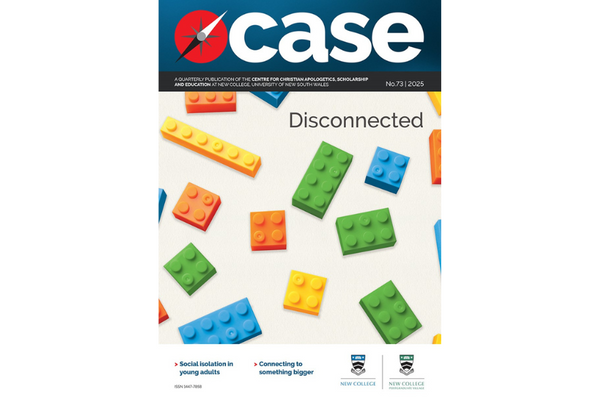Sex and Gender: Introduction

Bill Peirson

I am not sure with what emotions you might have opened the front cover of this edition of Case Quarterly. Certainly, for Dani and I, this has been a difficult edition to put together. When we first raised the possibility of a ‘gender’ edition a couple of years ago, we were hesitant. Gender is difficult to talk about. It is difficult to pin down exactly what it is, and there is intense disagreement about how to respond to the many issues it raises both within and beyond Christian circles. We were also acutely aware of our position within a secular university, and the potential consequences of claims about gender in this context.
But there were also compelling reasons to go ahead. CASE is based in a residential college that houses university students from different backgrounds and faiths, and navigating gender issues is high on the agenda of this cohort. And for a Centre that seeks to address current social issues from a Christian perspective, it fits the brief. Finally, as parents of young adults ourselves, we were both personally aware of the need for sensitive and sensible conversations about gender.
We then had to decide which of the many possible topics we would cover—gender dysphoria, sex and gender in the Bible, differences between men and women, feminism, the crisis in masculinity, gender roles in the church, gender and technology—far more than could be tackled in a single edition. We agreed that this first issue would focus on providing a groundwork for the discussion of contemporary questions of sex and gender, particularly with regard to identity, but also in the hope of following up some of the other topics in subsequent editions.
To that end, the edition begins with a discussion of terminology. With different conceptions of ‘sex’ and ‘gender’ floating around, this provides an orientation to some key ideas. The next articles unpack gender dysphoria and the biological development of sex and gender. What is the impact of living with gender dysphoria? What are the implications of the various sex and gender complexities for Christians? How can we care for one another better? The final two articles consider implications of gender identity legislation and policy for Christian institutions.
Many of the questions we have today about sex and gender simply did not arise for the biblical writers. The Bible clearly states that God created humans male and female and that this is a good thing (Genesis 1:26ff). But it is not a fast-track to simple black and white prescriptions about issues of sex and gender complexity. Not far into the story, the goodness of creation is compromised by sin, and things get complicated very quickly. There is no simple set of rules for navigating this terrain, but Scripture does provide some firm anchor points: an imperative to love one another with compassion and in truth (Colossians 3:5ff); a call to love God and seek his kingdom above all else (Matthew 6:33, 22:37); the knowledge that God loves us so much that he sent Jesus to die for us (John 3:16); and the firm hope of a time when there will be ‘no more death or mourning or crying or pain’ for those who trust him (Revelation 21:4).
The pain some of my close friends have experienced in association with gender issues has been acute. Be assured that this edition has been compiled with a great sense of the weight of these issues, as I hope will be clear as you read. Jesus said ‘Come to me, all who labour and are heavy laden, and I will give you rest’ (Matthew 11:28).
Leave a comment
Comments will be approved before showing up.



